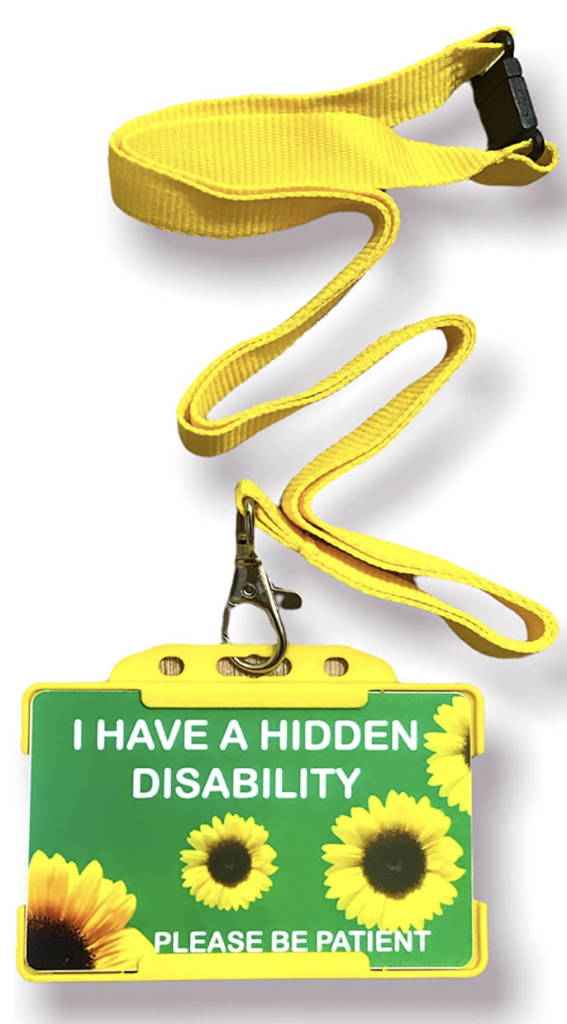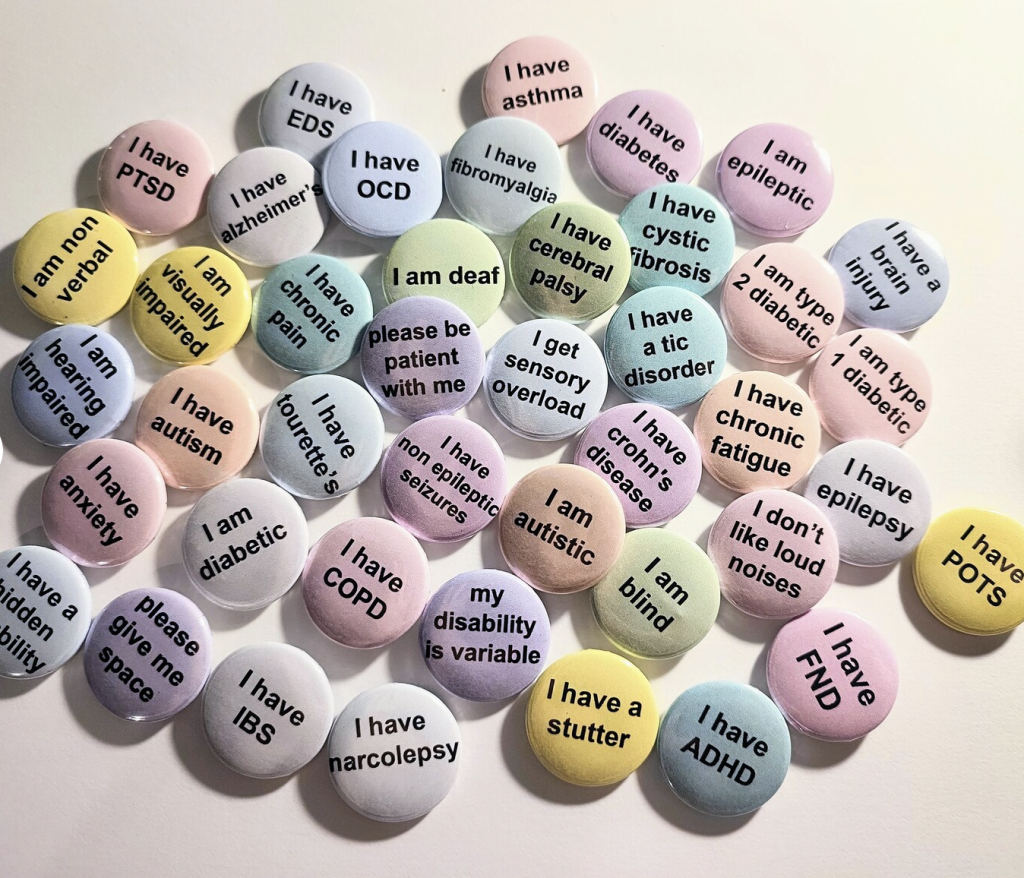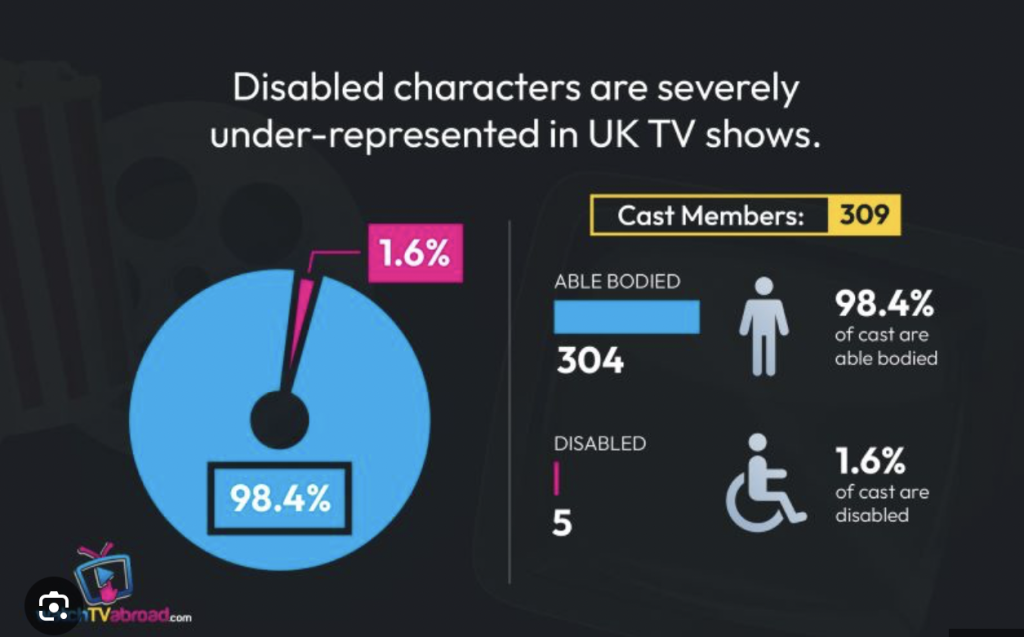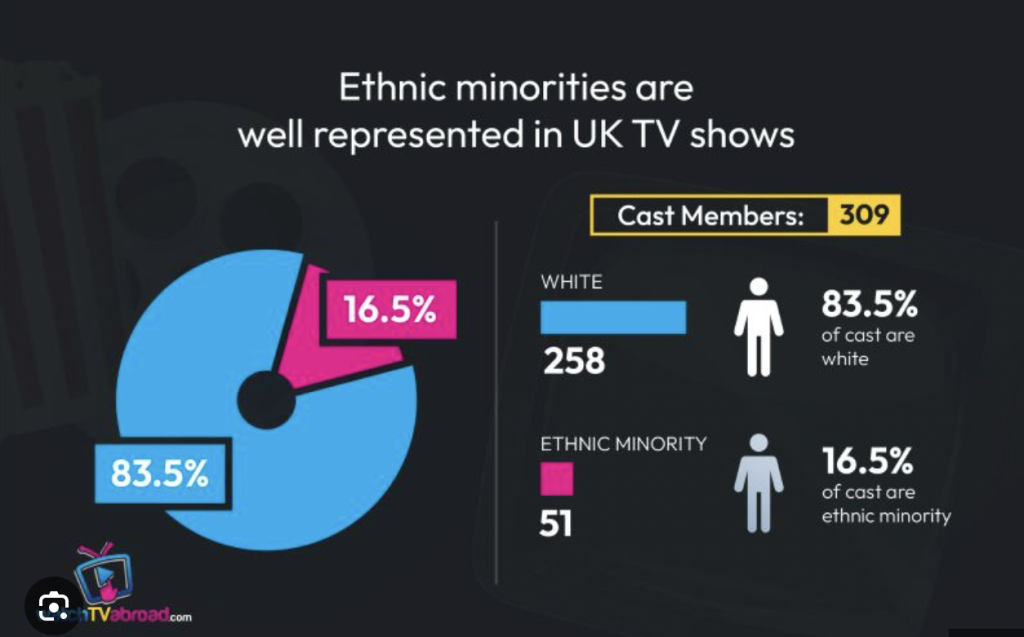Reflection
I was struck by how Christine Sun Kim has chosen not to wear a lanyard or carry a badge on her travels and amongst the public. Some people view disclosure as inviting exclusion and stigma from others, which may cause additional barriers in their lives. As a tutor, the lack of disclosure can lead to a lack of support from the university and limited ways to help them.


According to Post Parliament, ‘It is estimated that 70-80% of disabilities are invisible. There is a wide range of impairments or conditions not necessarily visible to others.’
At UAL, our students come from all walks of life with different needs and positionality/intersectionality. My take from the three resources is to look at ways to support students in an inclusive way when their disability is invisible or undeclared. Having this lanyard or badge by the university entrance is one possibility for encouragement. Of course, having the autonomy to declare or not is essential to achieve the feeling of belonging. Kim has decided not to express her impairment and develop a language through exploration. Her (dis)ability has afforded her a new/different understanding of the world and informs her interdisciplinary practice.
For students like Ubuntu, it is clear that educational institutions and healthcare providers have failed in her words due to her ‘intersectionality’. Arthur Reynolds, a professor at the Institute of Child Development at the University of Minnesota, states that once a child is expelled, this can have an impression on the child and the parents and school to view the child negatively. The child can also be put in a position they can’t reverse. “The number of cumulative years of learning loss starts much younger,” Arthur Reynolds. I believe educating (PoC) parents and SENCOs to look for early signs and administer the proper screening is paramount as diagnoses afford the right interventions for social, emotional and academic outcomes.
Mandell and colleagues (2007) state, “Black children were nearly twice as likely as children of other races to be misdiagnosed with conduct disorders and oppositional defiant disorders prior to an ASD diagnosis.” And continue to elaborate that black parents posited concern relating to their children’s development in healthcare providers and schools in ways that emphasise learning needs symptoms and emphasis on disruptive behaviours, which may sway clinicians from considering learning needs and other diagnoses. Contrastingly, White parents tend to lead with learning needs rather than disruptive behaviours.
As highlighted in the resource #DisabilityTooWhite, the distinct lack of dedicated resources, cultural literature and research available to PoC and marginalised communities regarding health, disability and education goes conjointly with the lack of awareness and acceptance as there is not enough representation in the media.


This data gathered by the Annual Population Survey, highlights that less than 10% of disabled PoC people aged 16 and over are represented in the media. To change the narrative and normalise PoC neurodiversity and disability I feel is so important for rapid increase in the representation in the media to change the discrimination and alienation that is inherent currently. Brissett-Bailey, M. (2023).
Bibliography
Brissett-Bailey, M. (2023). Black, Brilliant and Dyslexic. Jessica Kingsley Publishers.
27061696 (n.d.). Disabled People: The Voice of Many. [online] Issuu. Available at: https://issuu.com/shadesofnoir/docs/disabled_people.
HuffPost. (2016). Confronting the Whitewashing Of Disability: Interview with #DisabilityTooWhite Creator Vilissa Thompson. [online] Available at:https://www.huffpost.com/entry/confronting-the-whitewash_b_10574994?gucc ounter=1.
Selby, the (2011). Christine Sun Kim – 10min. Vimeo. Available at:https://vimeo.com/31083172.
UAL (2020). Disability and dyslexia. [online] UAL. Available at:https://www.arts.ac.uk/students/student-services/disability-and-dyslexia.
https://www.ofcom.org.uk/__data/assets/pdf_file/0019/124255/bbc1-bbc2-diversity-moni toring.pdf
UK Parliament https://post.parliament.uk/research-briefings/post-pn-0689/
6 responses to “Inclusive Practices Unit 1 Disability”
Thanks for sharing Freya! The visual data you have included in your reflection is really useful to see, albeit quite stark.
I was reading an article by Lynne Kendall recently (linked below!) which speaks to your comment on people potentially viewing disclosure of a disability or specific learning difference as inviting exclusion and stigmas from others. Interestingly this article speaks on the student experience and from the student viewpoint rather than the tutor.
It breaks it down into 3 themes..
1. Identifying with a disability
2. Barriers to participation
3. Assessment
Some students chose not to disclose their disability or learning difference through fear of stigma and limiting their career progression. Others chose not to disclose it because they didn’t view it as a disability but instead a condition, and viewed the term disability as something that ‘holds you back’. Interestingly then particular teaching and assessment methods seem to have almost forced students to disclose their disability or learning difference as they weren’t comfortable, often due to reading and writing or presentation speaking.
It would be interesting to know as a dyslexic tutor yourself and your positionality, if there are specific things you do within your teaching practice to make learning and assessment more accessible?
Higher Education and disability: exploring student experiences. – Lynne Kendall – https://www.tandfonline.com/doi/epdf/10.1080/2331186X.2016.1256142?needAccess=true&role=button
This is a very interesting series of reflections. I found the representation of Rebekah Ubuntu and their intersectionality enlightening, I was surprised that I hadn’t heard of their work as I’ve made an effort to expand the existing Sound and Music canon so I’m grateful to have their work highlighted.
Your personal insights into Ubuntu’s journey for diagnosis and the issue of disclosure, when you discuss Sun Kim’s lack of wearing a lanyard, show 2 sides of the struggle with accessing support. Students can go through the whole of University waiting for a diagnosis with current waiting times, and at the same time once they have a diagnosis, do they put themselves in a vulnerable position by disclosing? It is important to acknowledge the risk they may feel while at the same time we need this disclosure to be able to support them and signpost them.
I found the whitewashing of disability in tv and movie post provocative in a good way, it led me to consider if I’ve ever seen this myself and really shows the lack of intersectional representation within the media. As we refer to the media as resources when we are teaching (particularly in the Screen School at LCC) there is a danger that we are perpetuating this, disseminating whitewashing through the resources we use. It has made me consider how to expand upon the media resources, I find that charities are the resources where intersectional media resources can be found, however this situates these practices within the charity sector rather than industry.
Thanks, Ingrid, for your comments. I agree with you to a greater extent, but there is a fine line to everything. I suppose we have to guide and signpost our students to all available support and let them make the right decision for them.
Thanks, Ingrid, for your comments. I agree with you to a greater extent, but there is a fine line to everything. We have to guide and signpost our students to all available support and let them make the right decision.
Hi Freya,
Thank you for sharing your reflections and honest accounts of being a tutor with a disability.
I’m interested, have you ever disclosed this to your students, if so, how did students respond? If not, I would be interested to know why not, and whether you feel this would invite ‘exclusion’ from students, or whether this might create a culture of discussion and sharing.
I was reading Anastasia Liasidou’s ‘Inclusive education and critical pedagogy at the intersections of disability, race,
gender and class’ – available on moodle:
https://moodle.arts.ac.uk/pluginfile.php/1527343/mod_folder/content/0/intersections%20of%20disability%2C%20race%2C%20gender%20and%20class%20pdf.pdf?forcedownload=1
Anastasia discusses which how students with disabilities are subject to ‘exclusionary inclusion’, to help students ‘overcome barriers to learning’ – and by extension render students with disabilities as ‘abnormal’ in relation to the ‘ideal physiological, emotional, intellectual and cultural functions’ a university curriculum might be designed for.
I think this could be a useful for resource for you to reference in relation to your reflections on black children being diagnosed with conduct disorders.
Hope this helps!
Best,
Joe
Hi Joe,
Thank you for your comments. For your first point, I am not ashamed to be a neurodivergent – on the contrary, it allows me to think and create differently. Mentally I have reframed it into some positive. For those reasons, I am always ready to share my experience and some of my techniques with students.
Thank you for pointing out Anastasia Liasidou. I find her materials so sagacious.